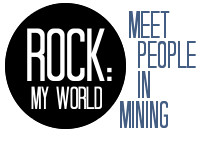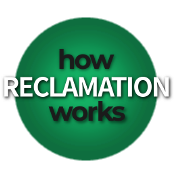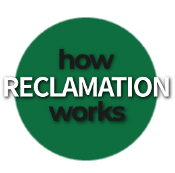- Why Mining Matters
- Jobs
- Safety
- Environment & Operations
- FAQ
- Links
- Fun Stuff
You are here
The Gypsum Empress
The Gypsum Empress, a Nova Scotian schooner, sank twice in the spring of 1917, according to newspaper articles. That’s not possible so we did some digging.
Jerome Berre King was an important figure in the history of gypsum mining in Hants County. King built his first wallboard factory in 1876 on New York’s Staten Island and built a business empire that relied heavily on exports of Nova Scotia gypsum, a key ingredient in wallboard.
King owned a fleet of ships to transport gypsum from Nova Scotia to New York. Between 1890-1892 the D.S. Howard shipyard at Parrsboro built four large schooners for King: the Gypsum Queen, Gypsum Princess, Gypsum Emperor and the Gypsum King. Another shipbuilder, J.B. North, built the Gypsum Prince at Hantsport and the Gypsum Empress at Horton.
According to the US State Department, the Gypsum Empress was “abandoned waterlogged” on May 17, 1917. The ship, registered at 723 tons, had been sold by that time to the Cowles Ship Supply Company of Mobile, Alabama, and was no longer being used to haul gypsum. Instead, it was transporting hard pine from American ports, including Pensacola, Florida, where the photo below was taken, to Genoa, Italy. It had done that run several times, but a May storm was too much for it.
The eight-person crew abandoned ship but only four crew members made it back to New York, according to newspaper articles, “with an account of suffering in an open boat for 14 days before they were picked up by the British steamship Loch Lomond and taken to Gibraltar. After the crew abandoned their sinking ship, their lifeboat capsized. Four were drowned and much of the provisions and drinking water was lost. By heroic work the four remaining sailors righted the boat and recovered some of the water-soaked food. By catching rainwater and rationing themselves they kept alive, although battered by heavy seas, until the Loch Lomond sighted them on May 31.”
We know from other records – The Lloyd’s Register of Shipping and Edith Mosher’s book “White Rock” - that this is what happened to the Gypsum Empress.
However, another story was widely reported in the United States about the sinking of the Gypsum Empress shortly before its actual sinking.
According to a May 12 article that ran in a number of newspapers, crew members, including Nova Scotia’s Randolph States, first mate, “encountered a submarine in the Mediterranean after leaving Boston for Naples on the American schooner Gypsum Empress. Their vessel was sunk and the crew in a small boat landed at Marseilles. While they were returning to America on the American schooner Marguerite the ship was sunk April 4 off the coast of France and they were again taken to Marseilles.”
It seems that in 1917, when communication technology was less sophisticated and the world was at war, the first ship in this story was misidentified as the Gypsum Empress, perhaps because the actual Gypsum Empress was also in the vicinity of the Mediterranean Sea.
We could not determine the correct name of the ship that was mistakenly reported as being the Gypsum Empress.
Captain Charles W. Willard of the Marguerite, the second ship sunk in this story, gave a fascinating description of what happened.
He said the Marguerite, a schooner, was southwest of Sardinia when “we were startled by a loud report and a shell came whistling along and after passing through the spanker sail, sped on a few feet over our heads. That was the first intimation we had of the presence of a U-boat, although she was then 100 yards astern of us. I lost no time, but rounded right to, taking in all sail at the same time. A small boat put out from the submarine and an officer and two of her men came on board our ship. They brought four bombs along. At the officer’s demand I gave him my papers. He looked them over and then said, roughly - ‘All right, I’ll sink you.’”
Willard said, “I tried to argue with him, explaining that we belonged to what at that time was a neutral country, but the only reply he deigned to give was: ‘This ship will be blown up in 10 minutes. I’ll give you just that much time to get off.’”
Willard and his crew were forced to abandoned ship in a small boat, in a gale. Willard told the German officer, “You may just as well shoot me as turn us adrift in a yawl in this kind of weather without a compass.” The officer pointed his pistol at Willard and threatened to do just that if he did not leave immediately, so Willard and his men pushed off and left without a compass.
They watched from the small boat as the Marguerite was blown up and she turned over and sank. The submarine disappeared.
Willard said, “We had a small sail but it was torn to shreds in a short while and were being blown along at the mercy of the wind toward the African coast.”
They threw overboard any belongings they had grabbed because the extra weight, especially after everything got soaked by waves, was too much for the small boat. According to Willard, “The fresh water which we had taken aboard also was spoiled by the waves, and our little food was carried away altogether. We finally came to within a mile of Biserta, which belongs to France, but were so exhausted that we could make no effort even to signal to the shore. It was at this point that we were espied by a French destroyer and taken aboard and then sent ashore.”
Fortunately, rescue came within 48 hours of leaving the Marguerite.
According to articles, “Capt. Willard said he believes submarine captains have been encouraged to sink neutral vessels by promises of reward. ‘That’s why they insist on getting the papers of vessels,’ he said. ‘They use them as receipts.’”
Today, most gypsum is used in manufacturing wallboard/drywall, which was invented in the United States in 1918. Plaster made from gypsum was sandwiched between two sheets of paper and within ten years, large scale production was revolutionizing the construction industry.
Wallboard is used in most buildings and an average home has about seven tons of gypsum in its walls. Nova Scotia has traditionally been one of the largest global providers of gypsum. Most walls in Nova Scotia contain gypsum quarried in the province.
Safety is the main reason gypsum is in wallboard. Gypsum is 21% water at the molecular level so it slows the spread of fire and helps save lives.
See the story of the Gypsum Queen…er, Gypsum Queens: https://notyourgrandfathersmining.ca/gypsum-queen


















































































